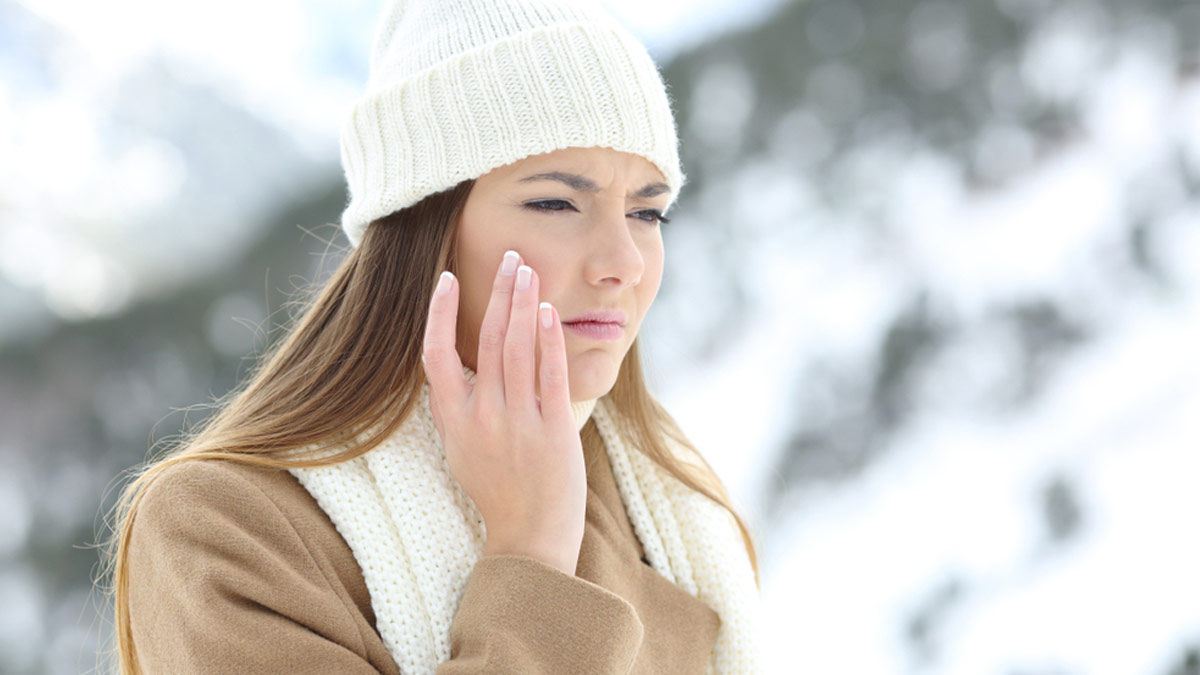
Have you noticed your skin becoming red and sore after exposure to cold wind in winter? This is due to a condition called windburn which leaves your skin dry and damaged. Windburn, despite its name, is not a burn; rather, it is the result of strong, chilly gusts that deplete the skin's natural oils and moisture. In this article, we explain what windburn is, its causes, and tips for finding relief.
Table of Content:-
What is Windburn?

Windburn is a skin condition that occurs when unprotected skin is exposed to cold, windy conditions for an extended period. It is a result of the combination of low temperatures and strong winds. The cold air, coupled with the wind, can lead to the removal of the skin's protective oils, leaving it dry, chapped, and red.
As per the Skin Cancer Foundation, the wind can make your skin less able to protect itself from the sun's rays. This means you could be more at risk of sun damage on cold and windy days.
Causes of Windburn
- Dry Air: Cold air is often dry, and when it lacks humidity, it can pull moisture from the skin, leading to dryness and irritation.
- Wind Exposure: The wind exacerbates the effects of cold temperatures by accelerating the moisture loss from the skin. This can strip away the natural oils that protect the skin, leaving it vulnerable.
- Ultraviolet (UV) Radiation: In winter, the sun may still emit UV radiation, which can contribute to skin damage. The combination of UV radiation and cold winds can intensify the impact on the skin.
Also Read: Nourishing Your Skin: Expert Lists Best Oils and The Ultimate Guide For Winter Skin Nourishment
Effective Relief Tips for Windburn

Don’t Skip Moisturising
It is important to keep yourself moisturised in winter to replenish lost moisture and repair the skin barrier. You should look for products containing ingredients like hyaluronic acid, glycerin, or shea butter. Also, apply moisturiser immediately after exposure to cold and wind and reapply throughout the day to maintain hydration.
Protective Clothing
It is important to wear clothes that shield your skin from the harsh elements. You can opt for windproof and waterproof outer layers to minimise exposure. Don't forget to cover extremities, such as hands, ears, and the face with gloves, hats, and scarves.

Sunscreen
Even in winter, UV radiation can contribute to skin damage. Therefore, apply a broad-spectrum sunscreen with at least SPF 30 to exposed areas of the skin before heading outdoors.
Avoid Hot Water
Did you know hot water can further dehydrate your skin? Hence, opt for lukewarm water when washing your face and body, and limit shower time to avoid stripping the skin of its natural oils.
Also Read: Winter Care For Skin And Hair: Expert Lists Common Concerns And Ingredients To Opt For
Humidify Indoor Spaces
You can even combat the dry indoor air by using a humidifier. Adding moisture to the air can help prevent excessive skin dryness.

Stay Hydrated
Windburn can dehydrate your skin, hence, it’s important to keep yourself hydrated to maintain healthy skin. It is a way to renew moisture from within your body.
Avoid Scratching
While scratching your windburn area may be tempting, however, you must refrain from doing so as it can worsen the condition. Keep your nails short to minimise damage. You can even use products, such as aloe vera gel to soothe the irritation.
[Disclaimer: This article contains information for informational purposes only, hence, we advise you to visit your skin expert if you notice any complications.]
Also watch this video
Read Next
Nourishing Your Skin: Expert Lists Best Oils and The Ultimate Guide For Winter Skin Nourishment
How we keep this article up to date:
We work with experts and keep a close eye on the latest in health and wellness. Whenever there is a new research or helpful information, we update our articles with accurate and useful advice.
Current Version